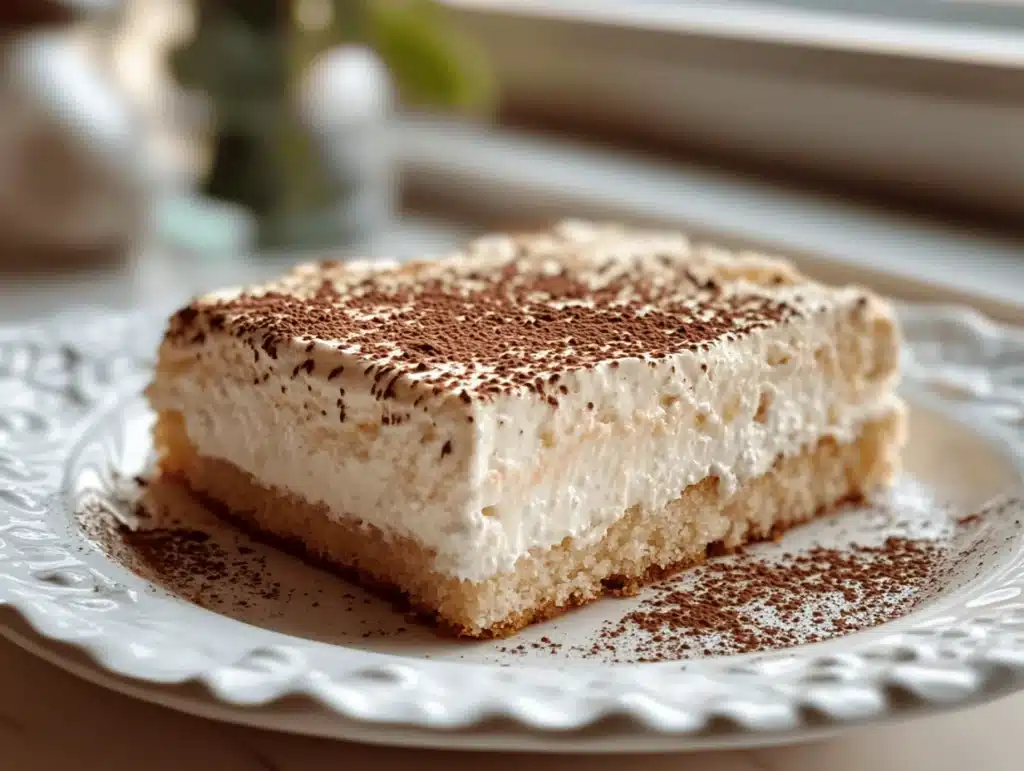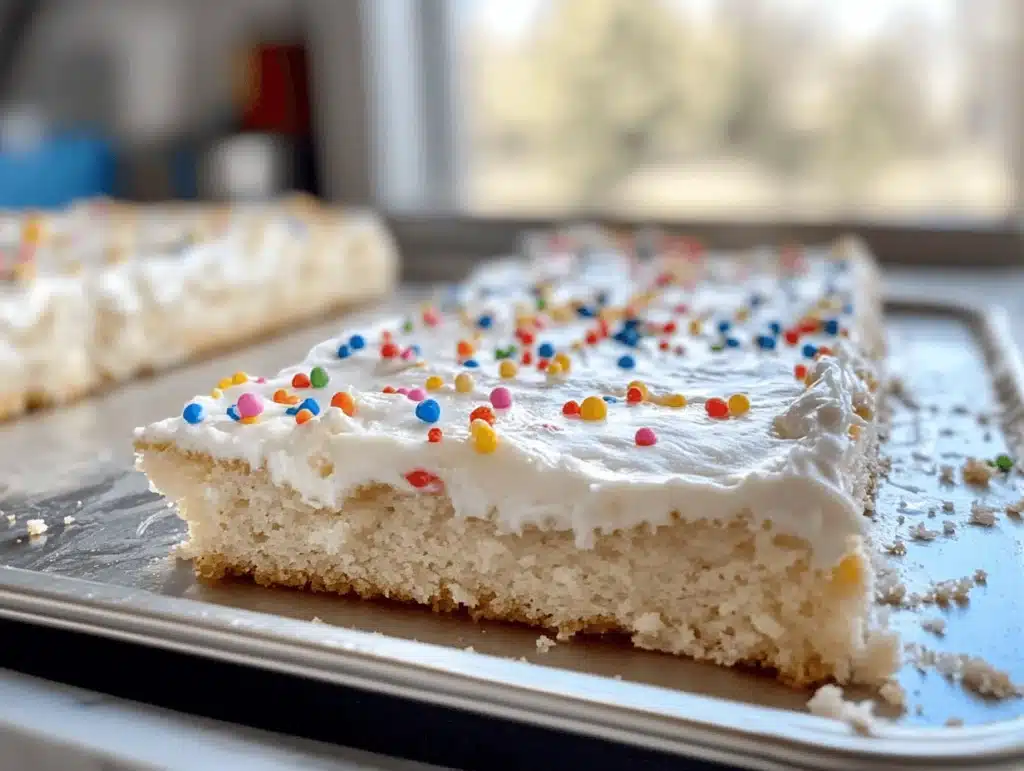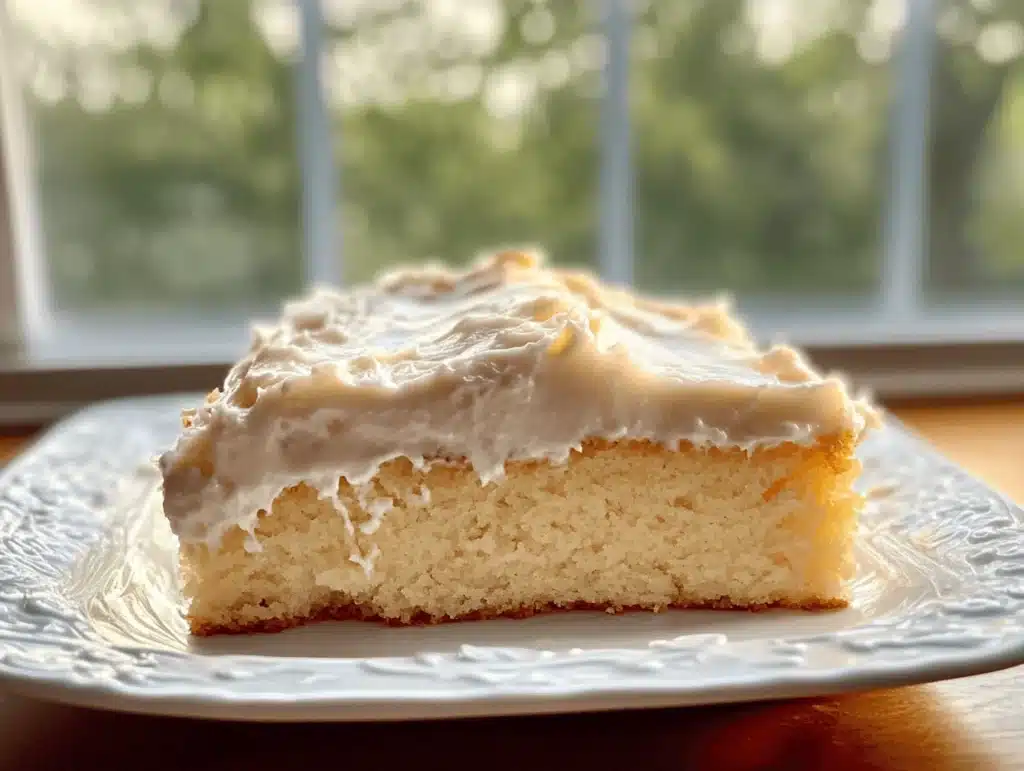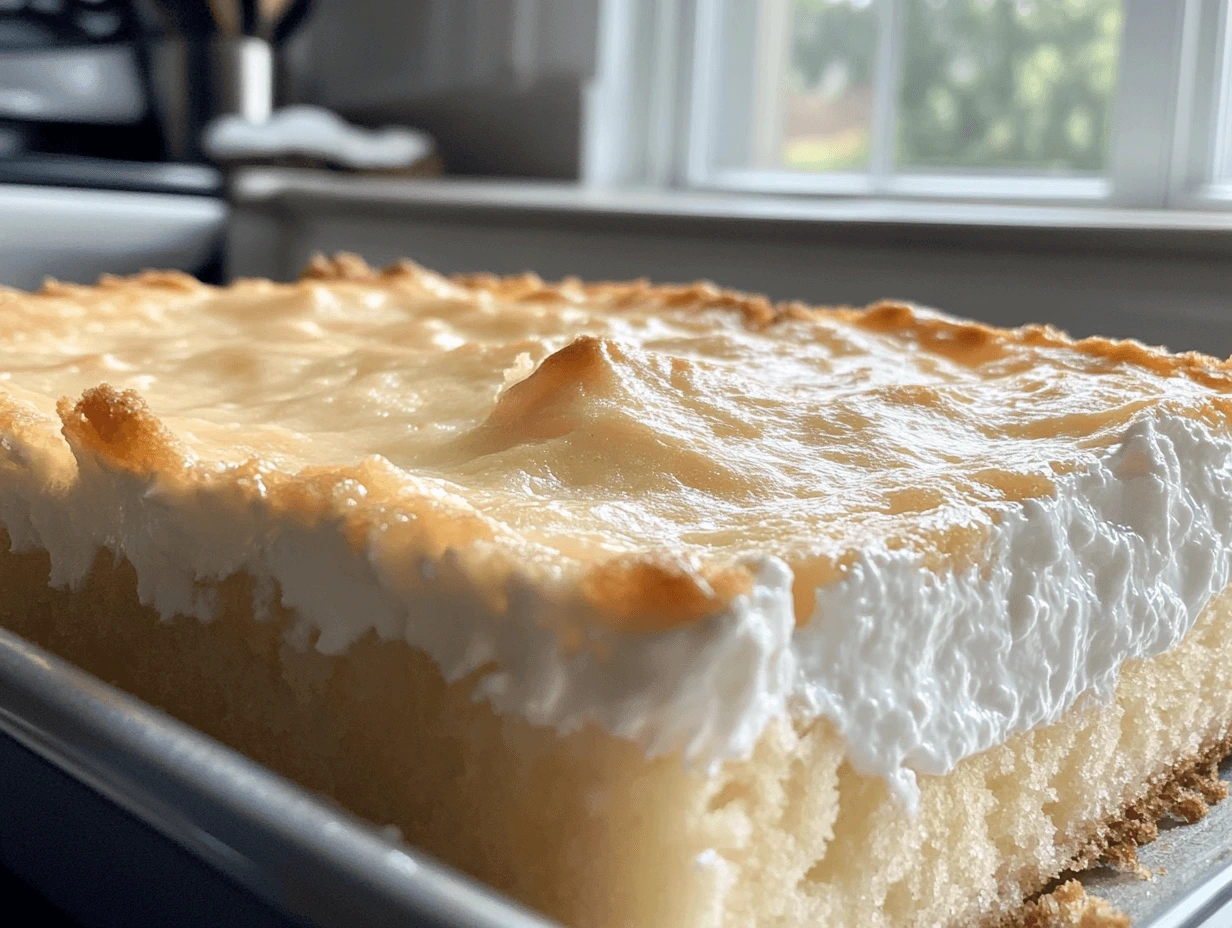What is Kefir Sheet Cake?
Kefir sheet cake is a modern twist on a traditional sheet cake, incorporating kefir, a fermented dairy product that’s packed with probiotics and beneficial bacteria. Kefir adds a unique flavor and texture to the cake, making it wonderfully moist and fluffy. This cake is not only delicious but also offers health benefits, including improving digestion and boosting immunity.
Understanding Kefir: More Than Just a Trend
Kefir has recently gained popularity due to its health benefits, and it’s much more than a passing trend. Kefir is similar to yogurt but has a thinner consistency, often described as a drinkable yogurt. It is produced by fermenting milk with kefir grains, which contain a mixture of bacteria and yeast. These microorganisms are what make kefir so unique and beneficial.
The bacteria in kefir are considered probiotics, which support gut health by promoting a healthy balance of beneficial bacteria in the digestive tract. This is important because a healthy gut microbiome is essential for digestion, immune function, and even mental health. Adding kefir to your baking can introduce these health benefits while creating a cake with a slightly tangy flavor and an incredibly moist texture.
Kefir’s health benefits are numerous, thanks to its high probiotic content. It’s rich in calcium, protein, and B vitamins, all of which are essential for maintaining a healthy body. Plus, kefir’s tangy flavor enhances the overall taste of the cake, providing a subtle yet distinct flavor that stands out.
The Role of Kefir in Baking

Kefir is known for its creamy texture and tart flavor, which makes it a fantastic substitute for other dairy products like milk or buttermilk in baking. When used in cakes, kefir helps create a light and tender crumb. The acidity of kefir also reacts with the baking soda, resulting in a fluffier texture compared to regular cake recipes.
Baking with kefir is ideal for people looking to enhance the moisture and texture of their cakes without compromising the flavor. Many traditional cake recipes use sour cream, yogurt, or buttermilk to create a tender crumb, but kefir provides a similar result while offering additional health benefits.
Additionally, the probiotic content in kefir contributes to better digestion and improved gut health. By incorporating kefir into baked goods like this easy kefir sheet cake, you’re not only treating your taste buds but also promoting a healthier digestive system.
But it’s not just about the flavor. Kefir can be a great addition to your baking arsenal because of its versatility. You can use it in various baked goods, from cakes to muffins, and even pancakes.
Health Benefits of Kefir
Aside from its flavor-enhancing properties, kefir offers several health benefits. Here’s why adding kefir to your baking is a great idea:
- Probiotic properties: Kefir is rich in beneficial bacteria, which can improve gut health and digestion. Probiotics have been shown to help alleviate symptoms of irritable bowel syndrome (IBS) and promote better overall gut function.
- Nutrient-rich: Kefir is high in calcium, protein, and B vitamins, which are crucial for bone health, energy, and metabolism. Calcium plays a vital role in maintaining strong bones, while protein supports muscle growth and repair.
- Boosts immune system: The probiotics in kefir help strengthen the body’s natural defenses against infections. Regular consumption of kefir can help enhance immune responses, making it easier for the body to fight off colds and other illnesses.
By incorporating kefir into your diet through kefir sheet cake, you’re not only treating yourself to a tasty dessert but also deliciously promoting your health. The health benefits of kefir are undeniable, and there are many ways to include it in your diet. Whether you drink it straight, add it to smoothies, or use it in your baked goods, kefir is a simple and nutritious way to enhance your meals.
Essential Ingredients for Kefir Sheet Cake
Now that you understand the importance of kefir in this cake, let’s take a look at the ingredients you’ll need to make your own kefir sheet cake. These ingredients are simple, accessible, and make for a moist and delicious cake every time:

- 1 ½ cups all-purpose flour: The base of the cake.
- 1 cup granulated sugar: For sweetness, but you can adjust the amount to your taste.
- 3 large eggs: Essential for binding the ingredients and providing structure to the cake.
- 1 cup plain kefir: The star ingredient that provides moisture and tanginess.
- ½ cup unsalted butter, melted: Adds richness and flavor to the cake.
- 1 teaspoon vanilla extract: Enhances the flavor of the cake.
- 1 teaspoon baking powder: Helps the cake rise and become fluffy.
- ½ teaspoon baking soda: Works with the kefir to create a light texture.
- Optional: lemon zest, cinnamon, chocolate chips, or berries for flavor variations.
These basic ingredients come together to create a simple yet flavorful kefir sheet cake that’s both satisfying and versatile.
Recommended Kitchen Equipment
For the best results, you’ll need the following kitchen equipment to make your kefir sheet cake:
- Mixing bowls: For combining wet and dry ingredients. It’s best to have at least two bowls: one for dry ingredients and one for wet ingredients.
- Measuring cups and spoons: To ensure accuracy. Proper measurements are key to achieving the perfect texture.
- Electric mixer: While a whisk can work, using an electric mixer will help cream the butter and sugar more effectively, creating a light, airy batter.
- 9×13-inch baking pan: This size pan is ideal for a sheet cake, providing the perfect amount of batter for an even bake.
- Cooling rack: To cool the cake evenly after baking, ensuring that the cake doesn’t become soggy.
- Parchment paper or non-stick spray: To prevent sticking and ensure that the cake comes out of the pan easily.
Having the right equipment makes the baking process smoother and ensures a perfectly baked cake every time.
Step-by-Step Preparation of Kefir Sheet Cake
Now that you have all the ingredients and equipment, it’s time to prepare your kefir sheet cake. Follow these detailed steps to create a cake that’s both delicious and healthy.
Preparing the Batter
- Preheat the oven to 350°F (175°C). Grease and line your baking pan with parchment paper or non-stick spray.
- In a large bowl, whisk together the flour, baking powder, and baking soda. This ensures that the dry ingredients are evenly distributed.
- In another bowl, cream together the melted butter and sugar until light and fluffy. This step incorporates air into the batter, helping the cake rise.
- Add the eggs, one at a time, beating well after each addition. This allows the eggs to fully incorporate into the mixture.
- Pour in the kefir and vanilla extract, mixing until combined. The kefir adds moisture and helps create a smooth batter.
- Gradually add the dry ingredients to the wet ingredients, stirring until smooth. Be careful not to overmix, as this can affect the texture of the cake.
Baking the Cake
- Pour the batter into the prepared baking pan, spreading it evenly with a spatula. This ensures the cake bakes evenly.
- Bake for 25-30 minutes, or until a toothpick inserted into the center comes out clean. The baking time may vary slightly depending on your oven, so it’s important to keep an eye on it.
- Let the cake cool in the pan for 10 minutes, then transfer it to a cooling rack. This allows the cake to firm up and prevents it from falling apart when sliced.
Cooling and Serving
Once your cake has cooled, you can serve it as is or dress it up with frosting or toppings. This cake pairs well with a simple cream cheese frosting or a dusting of powdered sugar. For an extra touch, add some fresh berries or a drizzle of chocolate sauce. The flavor of the cake is versatile, so you can customize it to your taste.
Flavor Variations

While the basic kefir sheet cake is delicious on its own, you can easily adjust the flavors by adding a few simple ingredients:
- Chocolate kefir sheet cake: Add ¼ cup of cocoa powder to the dry ingredients for a rich chocolate flavor. The cocoa pairs wonderfully with the tangy kefir, creating a decadent yet light dessert.
- Lemon kefir sheet cake: Incorporate lemon zest and juice to add a refreshing citrus twist. The lemon enhances the natural flavor of the kefir, making the cake bright and vibrant.
- Berry-infused kefir sheet cake: Fold in fresh or frozen berries for a burst of fruity flavor. Blueberries, raspberries, or strawberries work well in this variation, adding both sweetness and tartness.
These variations allow you to get creative with your kefir sheet cake and make it your own.
Frosting and Topping Ideas
You can take your kefir sheet cake to the next level with some tasty toppings:
- Cream cheese frosting: A smooth and tangy frosting that complements the flavors of the cake. To make cream cheese frosting, simply mix together cream cheese, powdered sugar, and a little vanilla extract.
- Whipped cream with fresh berries: A light and airy topping that adds a fresh touch. Top the cake with whipped cream and fresh strawberries or blueberries for a delightful combination.
- Powdered sugar: A simple yet elegant option for a light dusting over the cake. This keeps the focus on the cake itself while adding a touch of sweetness.
Troubleshooting and Tips
Here are some common issues that might arise while baking your kefir sheet cake, and how to solve them:
- Cake is too dense: Make sure you’re using the right amount of baking soda and baking powder. Too much or too little can affect the texture. Additionally, ensure that you don’t overmix the batter.
- Uneven baking: Ensure your oven is preheated and the pan is centered on the oven rack for even heat distribution. You can also rotate the pan halfway through baking for consistent results.
- Overly moist texture: If your cake is too wet, check that you’re using the right amount of kefir and not overmixing the batter. Also, make sure to let the cake cool properly.
Storage and Shelf Life
To store your kefir sheet cake:
- Keep it in an airtight container at room temperature for up to 3 days. This will help the cake retain its moisture.
- For longer storage, wrap the cake tightly in plastic wrap and freeze it for up to 3 months. Let it thaw at room temperature before serving.
FAQs
What Defines a Sheet Cake?
A sheet cake is a single-layer cake baked in a large, flat rectangular pan, commonly known as a sheet pan or jelly roll pan. It is typically 1-2 inches in height and designed for simplicity, making it easy to serve for large gatherings. Sheet cakes are often frosted and cut into squares or rectangles for serving.
Key Features of a Sheet Cake:
- Shape and Size: Rectangular and flat, baked in a shallow pan.
- Single Layer: Unlike layered cakes, sheet cakes are usually just one layer.
- Ease of Serving: Ideal for parties and events due to its straightforward cutting and serving style.
- Variety of Flavors: Can be made in any cake flavor, from chocolate to vanilla to red velvet.
What Is Kefir in Baking?
Kefir is a fermented dairy product similar to buttermilk or yogurt, but it has a thinner consistency and a tangy flavor. It’s made by fermenting milk with kefir grains, which are a combination of bacteria and yeast.
In baking, kefir serves as a substitute for ingredients like buttermilk, yogurt, or even milk due to its acidity, which reacts with baking soda to create a tender crumb and help cakes, muffins, or bread rise.
Benefits of Using Kefir in Baking:
- Enhanced Moisture: Adds richness and moisture to baked goods.
- Improved Texture: Creates a tender and fluffy crumb.
- Tangy Flavor: Provides a slight tang that balances sweetness in cakes and muffins.
- Probiotic Properties: Adds a health boost with gut-friendly probiotics.
What’s the Difference Between Sheet Cake and Regular Cake?
- Shape and Size:
- Sheet Cake: Baked in a large, flat rectangular pan; usually single-layer.
- Regular Cake: Can be baked in various pan shapes (round, square, etc.) and typically has multiple layers.
- Frosting and Decoration:
- Sheet Cake: Frosted only on the top; minimal decoration.
- Regular Cake: Often layered with frosting and has more intricate decorations, such as piping or fondant.
- Purpose:
- Sheet Cake: Made for large gatherings and easy serving.
- Regular Cake: Designed for special occasions like birthdays or weddings and can have a more elaborate presentation.
- Serving Style:
- Sheet Cake: Sliced into squares or rectangles.
- Regular Cake: Typically sliced into wedges.
What Does a Cooked Sponge Cake Look Like?
A properly cooked sponge cake has the following characteristics:
- Golden Brown Top: The surface should have an even golden-brown color, indicating it’s fully baked.
- Springy Texture: When lightly pressed in the center, the cake should spring back without leaving an indentation.
- Light and Airy Crumb: The interior should be soft, fluffy, and full of small, uniform air bubbles.
- Even Rise: A well-cooked sponge cake rises evenly without sinking in the middle.
- Smooth Edges: The sides should pull slightly away from the pan, making it easy to remove.


1 thought on “Easy Kefir Sheet Cake Recipe: A Delicious and Healthy Twist on Traditional Cake”